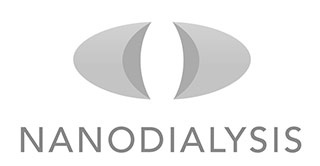Technology
In traditional peritoneal dialysis (PD), the peritoneal cavity is filled with a stationary dialysate filling. This filling quickly becomes saturated, limiting the rate of toxin removal.
WEAKID introduces two innovations: in WEAKID, the dialysate is continuously recirculated in the peritoneal cavity and the dialysate is continuously refreshed by sorbents. This offers a more efficient removal of toxins compared to traditional PD.
Continuous refreshing
The dialysate is refreshed by a cartridge that removes the toxins from the dialysate by means of sorbents. For nighttime use, the cartridge is combined with a dialysate unit. The dialysate unit contains fresh dialysate with glucose for the osmotic removal of excess fluid (ultrafiltration).
Continuous recirculation
Recirculation ensures a controlled release of glucose, which keeps the glucose concentration at a constant level throughout the treatment. This prevents high peak glucose concentrations, such as in traditional PD, that are harmful to the peritoneal membrane.

We make life easier on dialysis
